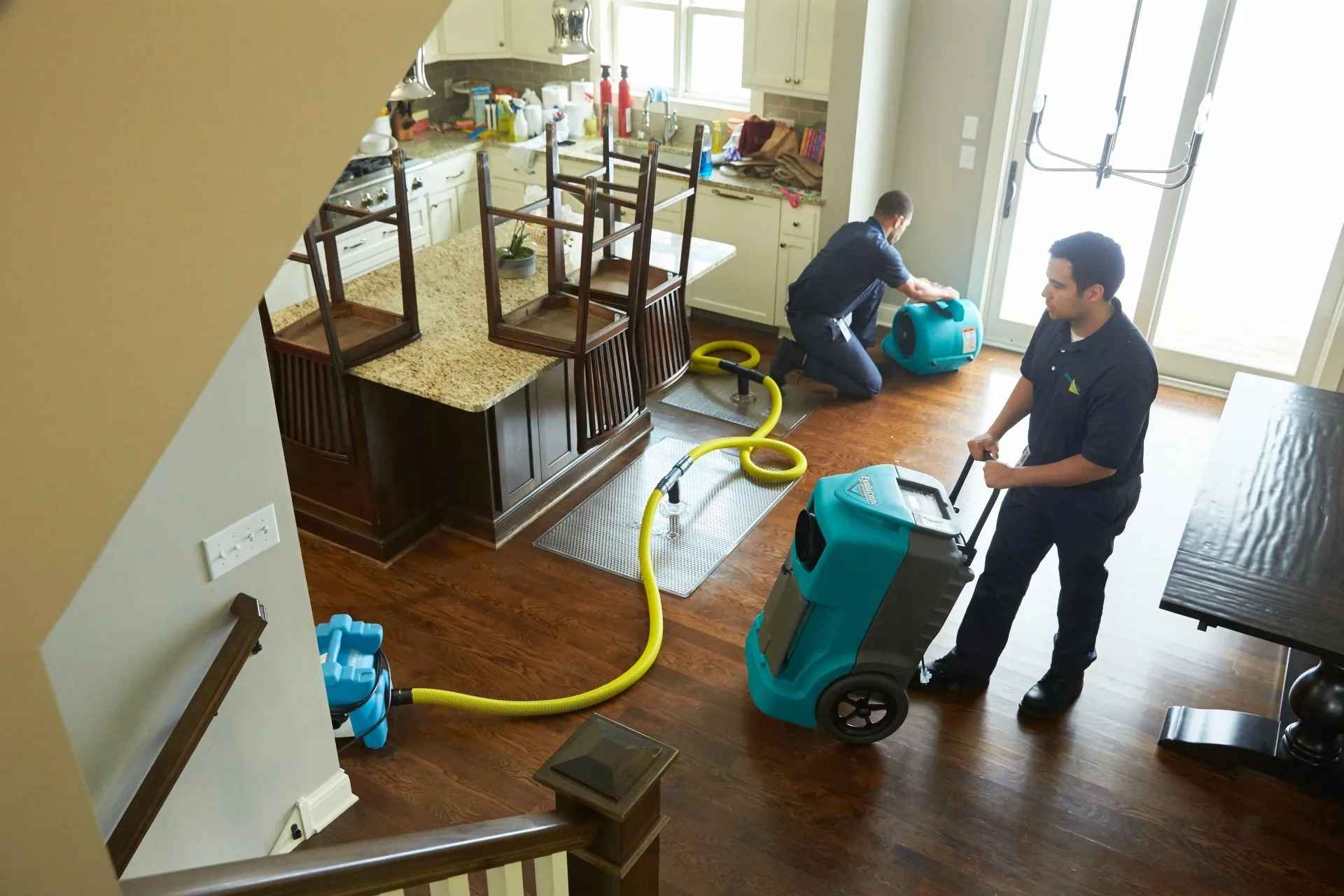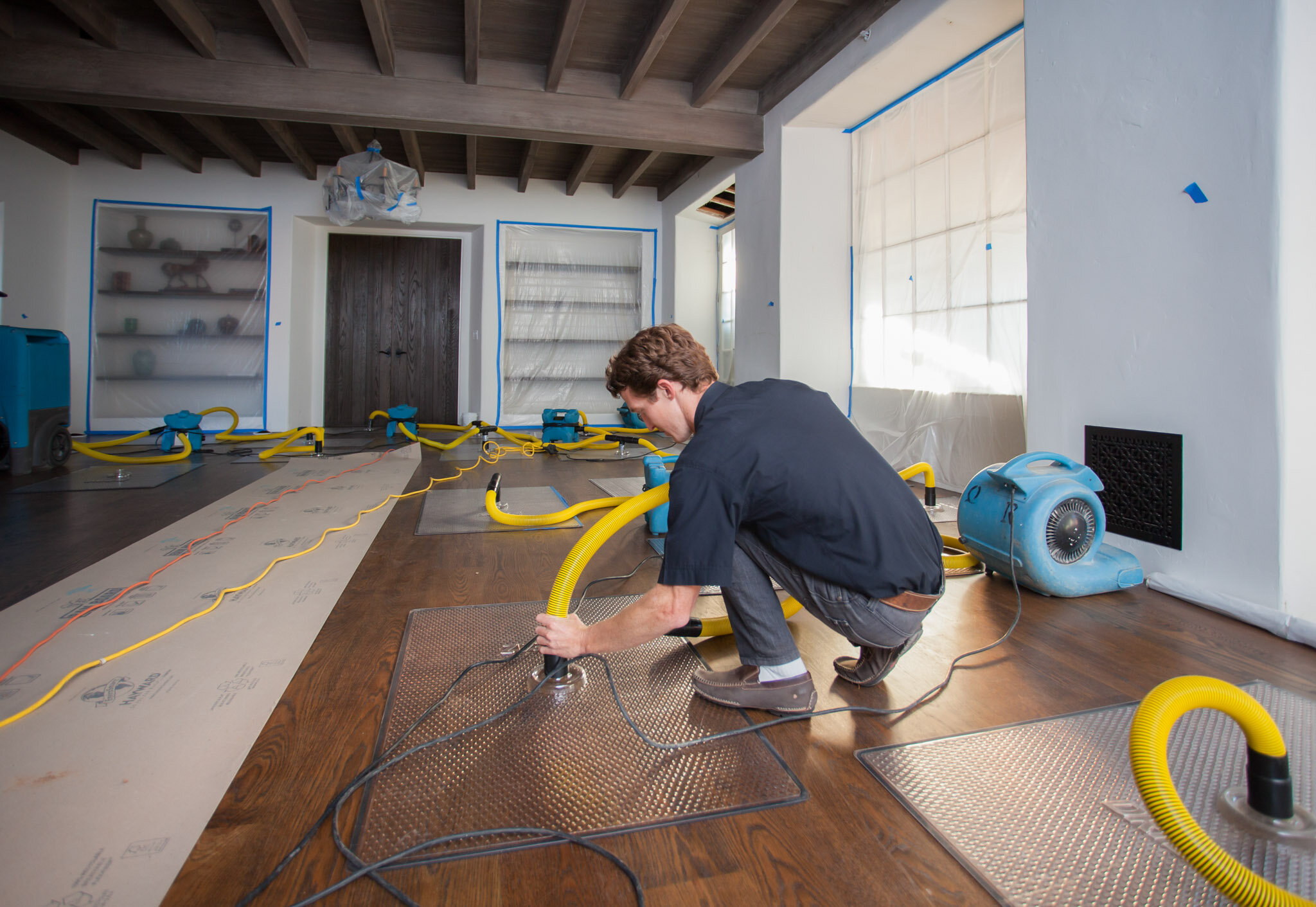Top Tips for Effective Water Damage Restoration: Protect Your Residential Or Commercial Property Today
Water damage can strike unexpectedly, creating significant disruption and possible hazards. Effective restoration calls for an organized technique to minimize further damage. From examining the damage to executing precautionary steps, each step plays a crucial role in guarding property. Recognizing these strategies can make all the distinction in the aftermath of a water-related situation. What essential actions should be focused on to assure comprehensive defense?
Examine the Damage Quickly
When a water damage event occurs, it is essential to analyze the damage promptly to minimize further concerns. This initial examination aids figure out the degree of the damage and identifies impacted locations. Water can seep into walls, floorings, and furnishings, leading to mold development and structural instability if not resolved promptly. A thorough inspection ought to include inspecting for discoloration, moisture, and mildewy smells, which indicate dampness presence. It is also crucial to document the damage through photos and notes for insurance objectives. Involving specialists for an extra thorough assessment may be necessary, particularly when dealing with extensive or hidden damage. Water Damage Restoration. Early acknowledgment and precise analysis lay the structure for reliable restoration and safeguard the building from extra difficulties
Shut down the Water
Shutting down the supply of water is a necessary step in stopping more damage throughout a water-related occurrence. When a leak or flood occurs, instant action is crucial to decrease the level of the damage. Situating the major water shut-off valve ought to be a top priority. This valve is frequently positioned near the water meter or where the water line enters the building. As soon as situated, turning the shutoff clockwise will quit the circulation of water. In situations where the main shutoff is inaccessible, individual shut-off shutoffs for home appliances may also be made use of. Promptly turning off the water system not just shields the residential property from extra harm however also helps with the subsequent restoration procedure, guaranteeing that recuperation initiatives can begin immediately.
Remove Excess Water Quickly

Removing excess water without delay is necessary for decreasing damage and stopping mold development in impacted locations. The longer water remains touching products such as insulation, drywall, and timber, the better the risk of structural damage and the development of mold. Water Damage Restoration. Homeowners ought to act quickly to evaluate the situation and use ideal tools, such as wet vacuums or pumps, to remove standing water successfully. If the quantity of water is significant, speaking to professional restoration services might be necessary, as they can supply specific tools and expertise. Additionally, getting rid of furnishings and personal belongings from the affected area can help to decrease damage and promote the total restoration procedure. Timely action not just protects residential or commercial property however likewise aids in a smoother recuperation journey
Dry Out the Affected Location
After getting rid of excess water, it is crucial to dry the afflicted area thoroughly. This includes eliminating any standing water and boosting air circulation to facilitate evaporation. Reliable drying out will aid avoid mold development and additional damage.

Eliminate Standing Water
Swiftly dealing with standing water is vital for reliable water damage restoration. The existence of stagnant water can lead to additional residential property damage and develop an atmosphere for mold growth. To reduce these risks, it is vital to eliminate standing water as rapidly as possible. This procedure normally entails utilizing submersible pumps, damp vacuums, or specialized extraction tools. Specialists suggest evaluating the deepness and degree of the water prior to selecting the proper approach for removal. Security precautions should likewise be taken, consisting of using protective equipment and making sure electrical energy is shut off in affected locations. As soon as the standing water is successfully removed, the drying procedure can start, additionally safeguarding the residential property from continuous damage.
Boost Air Circulation
Enhancing air flow is crucial for properly drying locations affected by water damage. This process aids to accelerate evaporation, minimizing the threat of mold and mold growth. Specialists typically recommend making use of fans to produce a steady airflow throughout the area. Putting box followers in windows can attract fresh air, while high-velocity fans can route air flow in the direction of damp surfaces. Water Damage Restoration. In addition, opening up doors and home windows permits cross-ventilation, boosting the drying out procedure. Dehumidifiers can additionally be employed to remove excess dampness from the air, further helping in drying out. By making certain that air circulates openly, homeowner can substantially minimize the long-term impacts of water damage and shield the honesty of their framework
Inspect for Mold Growth
Mold and mildew growth is a check here significant worry complying with water damage, as it can result in wellness concerns and architectural degeneration. After any type of flooding or leaks, it is important to perform a thorough evaluation of the affected areas. This includes monitoring covert rooms such as behind wall surfaces, under rugs, and in basements or attic rooms where wetness might remain. Signs of mold consist of a mildewy odor, staining on surfaces, or visible growth. Homeowner ought to make use of protective gear when inspecting, as mold and mildew spores can position wellness dangers. If mold is found, it is vital to resolve it right away, as delaying removal can intensify the problem and enhance the threat of major health and wellness worries for passengers. Early intervention is vital to efficient mold and mildew monitoring.

Repair and Bring Back Broken Structures
When attending to water damage, it is vital to very first examine the architectural honesty of the affected locations. This examination aids determine possible risks and educates the necessary repair strategies. Involving expert restoration services guarantees that the restoration process is performed securely and efficiently.
Evaluate Structural Stability First
Prior to initiating any water damage restoration, it is crucial to evaluate the structural integrity of the afflicted location. This evaluation helps recognize any compromised elements, such as foundations, beams, or walls, which might present safety and security dangers - Water Damage Restoration. Inspecting for indications of bending, cracking, or mold and mildew development is vital, as these signs can expose underlying damage that needs instant interest. Furthermore, understanding the level of the damage can guide restoration efforts and identify whether repair work are feasible or if replacement is necessary. It is necessary to record searchings for extensively, as this details can be important for insurance cases or future reference. Prioritizing architectural analysis warranties that restoration initiatives proceed safely and efficiently, eventually securing the residential or commercial property and its residents
Use Specialist Restoration Services
Utilizing professional restoration solutions is crucial for successfully fixing and bring back damaged frameworks after water occurrences. These professionals possess the required training, devices, and experience to minimize and analyze water damage thoroughly. They can identify surprise problems, such as mold development and structural weaknesses, that might not be instantly apparent. Specialist services likewise use sophisticated drying methods and tools, ensuring that all moisture is gotten rid of to avoid further damage. In addition, they follow sector standards and guidelines, ensuring that the restoration procedure is safe and reliable. By engaging restoration experts, homeowner can accelerate healing, minimize lasting damage, and inevitably secure their investment. This positive method is important in keeping the integrity and security of damaged structures.
Prevent Future Water Damage
To effectively stop future water damage, homeowners need to take on an aggressive method to upkeep and repair services. Routine examination of downspouts, gutters, and roofing systems is important; clogged up seamless gutters can bring about water overflow and roofing leakages. Furthermore, looking for leakages in pipes components and devices can prevent potential damage. Home owners should also take into consideration mounting sump pumps in cellars or low-lying locations to manage water build-up. Sealing splits in structures and making sure appropriate drainage around the residential or commercial property are crucial steps in safeguarding against water intrusion. Moreover, preserving moisture levels with dehumidifiers can stop mold and mildew development. By applying these precautionary measures, property owners can greatly lower the danger of water damage and protect their building for the long-term.
When a water damage event occurs, it is necessary to evaluate the damage immediately to mitigate further issues (Emergency Water Removal). Removing excess water without delay is essential for reducing damage and preventing mold and mildew growth in influenced locations. Swiftly resolving standing water is vital for efficient water damage restoration. The existence of stationary water can lead to additional residential or commercial property damage and develop an atmosphere favorable to mold and mildew development. Before initiating any water damage restoration, it is vital to assess the architectural stability of the afflicted area